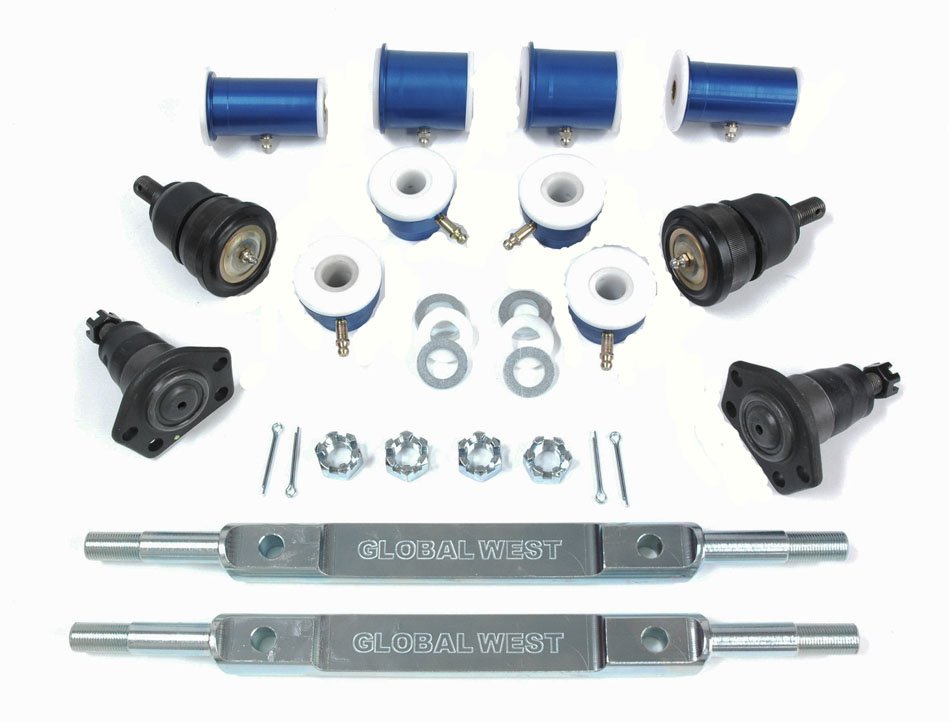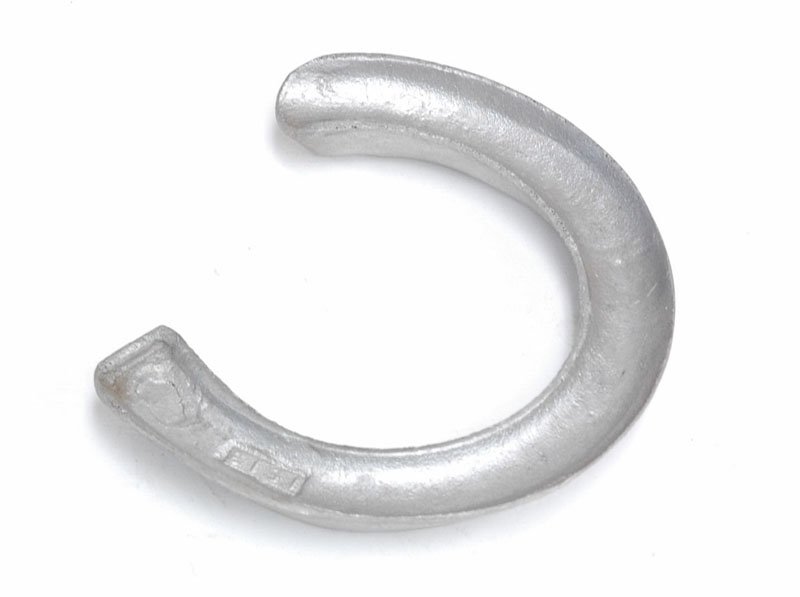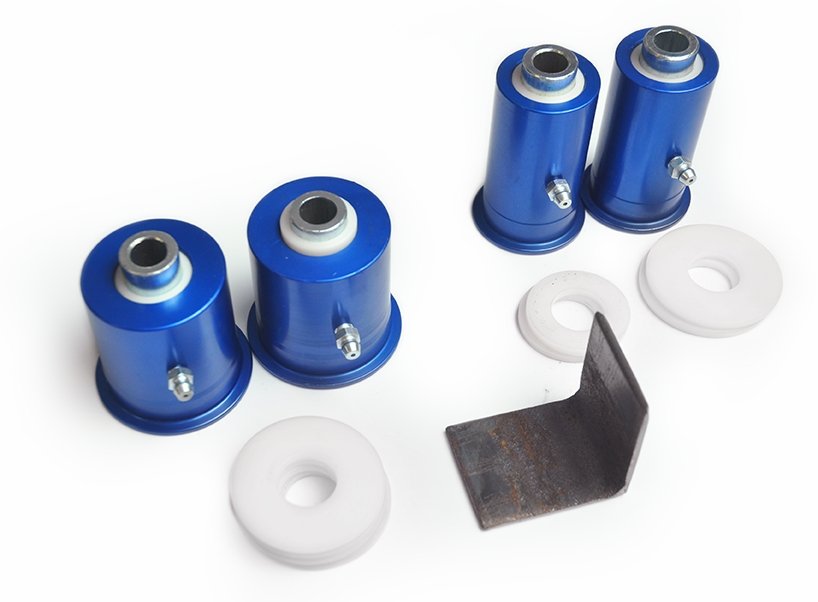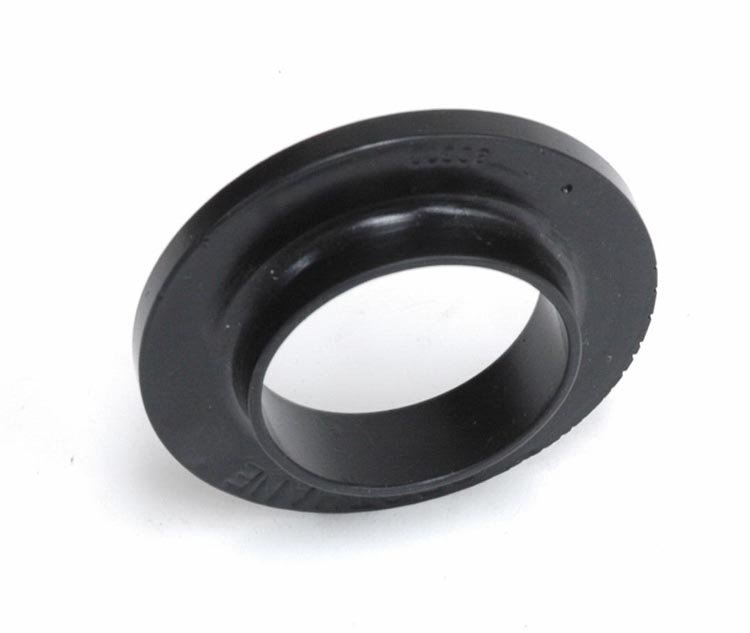Description
Econo-Track-Kits are great for street, and drag race applications. The kits are legal for many classes including the following:
Stock also called Street, Super Street, Super Stock, Mean Street, Extreme Street, True Street, Open Comp, and any of the ET classes.
The components featured are Global West Del-a-lum bushings, offset control arm shafts, and upper and lower ball joints. Del-a-lum bushings are a direct replacement. Simply press out the stock bushings including the shell and then press in the new Del-a-lum bushings. Del-a-lum bushings act like a bearing. They provide smooth movement up and down without deflecting fore and aft. The bushings reduce drag in the front end, allowing the front to raise and transfer load rapidly.
In addition to the bushings, offset upper control arm shafts are provided in the kit. Offset shafts allow you to increase caster and still maintain camber. Why do you need more caster? Caster provides straight line stability and increased cornering ability. Well you don’t need cornering ability on a drag car but if your car is dual purpose — you will. For example: Let’s take a 79 Chevelle, the stock alignment using stock shafts and control arms is caster — 3 degrees positive, camber 3/4 a degree positive and toe-in set at 1/8 to 3/23 in.
The optimum setting which is achieved using our tubular arms is 6 1/2 degrees positive caster, 0 camber with car raised 1-inch during the alignment, and 1/32 toe in per side measured under deflection.
There is no way you are going to get those numbers with stock shafts and arms. That is why you want the offset shafts. Offset shafts will allow you to get around 5 degrees positive caster if not a little more and still maintain camber. These setting also improve street performance. The car will have straight-line stability, greater self return action, and better corner turn in. The drag setting are caster-5 degrees positive, camber set to 0 degrees with the car raised 1-inch in the front end, and set the toe to toe-in 1/32 in per side when the tires are being pushed out. You do this to take up deflection.
The settings required for street alignment using these components are : Caster 4 1/2 degrees passenger side – driver side 4 degrees, Camber 1/2 degree negative camber both sides with the car on the ground –and set toe-in to 3/32 total measured pushing out on the tires.





